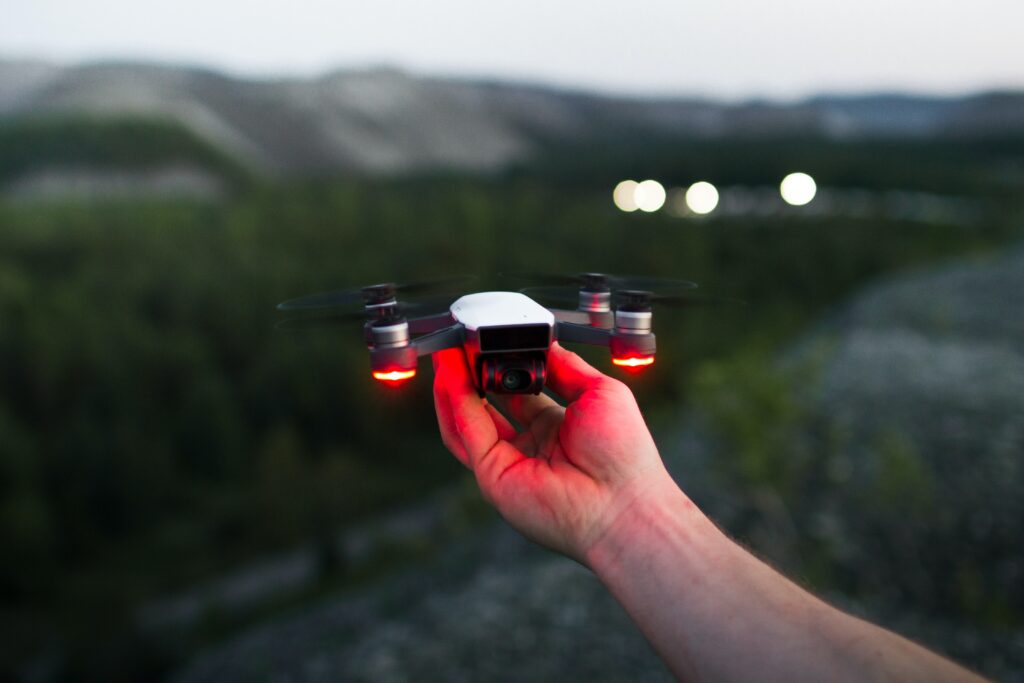COVID-19 and Smallholders Farmers: Technology Can Come to the Rescue
The news of 2020 undoubtedly had one major theme: COVID-19. Personal stories of grief and loss, speculations about the post-COVID economy, and studies of long-term health impacts. These were some of the major motifs covered by popular news outlets. These reports provided information and eased fear and uncertainty in the developed world, where COVID-19 appeared to be wreaking the worst havoc. While important, these topics largely (though not entirely) ignored the challenges posed by COVID-19 in the developing world. So, the science, humanitarian and development worlds were asking other questions: questions about how COVID-19 was impacting humanitarian crises, exacerbating them, and slowing the economic development of countries in the global south.
A number of research articles and policy notes published in the past year delved into the economic implications and recovery for smallholder farmers. Globally, 500 million smallholder farmers live on less than $2 per day. Even during normal times, they struggle to survive. Travel bans, movement restrictions and market closures have had severe impacts on these marginalized people. Supply chains have been disrupted, resulting in wasted agricultural products. Prices of supplies have gone up, and profits earned from sales have declined as markets and traders have become more difficult to access. Many smallholders also have secondary income sources, such as artisanal craft businesses, which have disappeared as trade and tourism plummeted.
 While the responses to disasters of the past have typically been to provide aid to smallholders in the form of grants, loans, seeds or other inputs, that may not be the answer this time. The economic downturn caused by COVID-19 is global. And, while a number of vaccines have arrived, the light at the end of the tunnel is still little more than a faint glow. This means that the economy will continue to be depressed until the global population reaches a high degree of immunity, and it also means that we are not yet even starting the economic recovery process. Not just urgency, but creativity, will also be needed if we want to alleviate the economic distress of smallholders as soon as possible.
While the responses to disasters of the past have typically been to provide aid to smallholders in the form of grants, loans, seeds or other inputs, that may not be the answer this time. The economic downturn caused by COVID-19 is global. And, while a number of vaccines have arrived, the light at the end of the tunnel is still little more than a faint glow. This means that the economy will continue to be depressed until the global population reaches a high degree of immunity, and it also means that we are not yet even starting the economic recovery process. Not just urgency, but creativity, will also be needed if we want to alleviate the economic distress of smallholders as soon as possible.
Technology in the field and at the fairground?
A number of recent studies have investigated the potential future impacts of technology on disaster resilience and response for smallholders. Technology, in this case, applies broadly to everything from techniques for planting and harvesting, to internet-based technologies, to unconventional forms of financing. World over, most of what has been imagined already exists, but part of the problem is that the tech is not broadly-used. Or, it is not adapted for the particular environmental or social contexts of a country. Or, it has not yet been simplified enough so that non-specialists can use it.
One study investigated crop losses due to a lack of on-farm storage. The study was done in Sub-Saharan Africa, where even in good years, over 25% of the harvested maize is lost because it cannot be suitably preserved. The use of simple hermetically-sealed bags can bring losses down from 30% after nine months of storage, to only 1.8%. This technology is inexpensive, yet not widely-used. After an experiment done in the early months of the COVID-19 epidemic, the researchers found that using these bags significantly increased food security in households that would normally be food insecure. Further, they found that if people would have been able to predict the length of the lockdown and had access to the bags earlier, food security would have extended even farther.
 Another study in Africa looked at the impact digital solutions can have on cocoa supply chains. In many parts of Africa, digital technologies have long been in use in certain supply chains, particularly those of higher value crops, like coffee and cocoa. Digital payment systems have been some of the most successful – and useful during the COVID-19 pandemic – as people are afraid of potential exposure during cash transactions. Digital payment systems also increase the transparency of payments, make obtaining and transferring the funds exponentially faster, and provide a permanent receipt on the cloud if one is needed.
Another study in Africa looked at the impact digital solutions can have on cocoa supply chains. In many parts of Africa, digital technologies have long been in use in certain supply chains, particularly those of higher value crops, like coffee and cocoa. Digital payment systems have been some of the most successful – and useful during the COVID-19 pandemic – as people are afraid of potential exposure during cash transactions. Digital payment systems also increase the transparency of payments, make obtaining and transferring the funds exponentially faster, and provide a permanent receipt on the cloud if one is needed.
A secondary impact of COVID-19 travel restrictions was decreased access to training. In both the global north and south, agricultural extension agents provide an important link between governments, markets and farmers. Extension agents in many developing countries are absolutely essential for training farmers in best practices and providing information on planting, harvesting and marketing times. During the first COVID-19 lockdowns, extensions agents were not able to do their work in many parts of the world, resulting in fewer well-trained farmers and inadequate information about crops. However, apps like Cocoalink, as just one example, train potential farmers in entrepreneurship, so even during a lockdown, they are able to learn. Such apps have huge potential in not only improving the resilience of very remote communities, but can be incredibly useful during any type of disaster that might make physical movement difficult.
An earlier review of farmer extension systems in India. found that farmers’ needs often were not being met, despite the fact that multiple and sometimes overlapping systems exist. Further, women typically have less access to information, and digital apps that specifically target and train them can have huge impacts on their health and well-being.
Information and communication technologies (ICT) do of course far more than provide training – they also can link producers, traders and markets, reducing market inefficiencies. Another pre-COVID study examined ICTs in use for agriculture in general, and smallholders in particular. Many of these ICTs were designed to improve resiliency to climate change, but provide resiliency during any type of disaster. Of the 27 ICTs studied, the authors found that almost all used a top-down approach (n=23), emphasizing provision of services or communications to farmers more than overall livelihood support. One that did focus on grassroots livelihood support is called Digital Green; this app identifies local people to create videos and share best practices. The localized participatory nature of Digital Green creates trust and therefore increased the adoption of sustainable livelihood practices throughout the community.

COVID-19 Rescue Funds: Expand and Localize, Don’t Reinvent
The upshot of these and many more studies is that technologies to improve the livelihoods of smallholder farmers exist and work when they are broadly marketed and well used. They increase the resilience of farmers to all disasters, including COVID-19 as well as the increasing number of climate shocks we expect to see in the coming decades. Among others not mentioned here include “technologies” to provide seeds to the right parts of markets, technologies that make accessing loans more streamlined, and Geographic Information System (GIS) technologies that can help all land managers understand where to open new land for planting, and when crops are at optimum size for harvesting.
Now as we begin the undoubtedly long recovery process from the ongoing global disaster, the issue is: how do we efficiently and quickly rehabilitate local lives and local economies? Clearly, when it comes to agriculture, the solutions we need for the economic crisis we are currently facing are already there. They simply are not broadly used. This means that as more governments and international funding agencies offer COVID-19 relief packages, funding should be channeled into localizing already successful technologies and disseminating them broadly.
Focus now must be placed not just on efforts that provide one-time disaster relief, but on efforts that provide long-term resilience to all disasters. Funding needs to prioritize sustainable, bottom-up projects that allow communities to build back better, rather than just achieve a brief rebound. COVID-19 has been an unprecedented global disaster, but in the face of burgeoning global populations, environmental degradation, and climate change, it unfortunately will not be the last. Development and humanitarian professionals must prepare for the future while we recover from the past.
